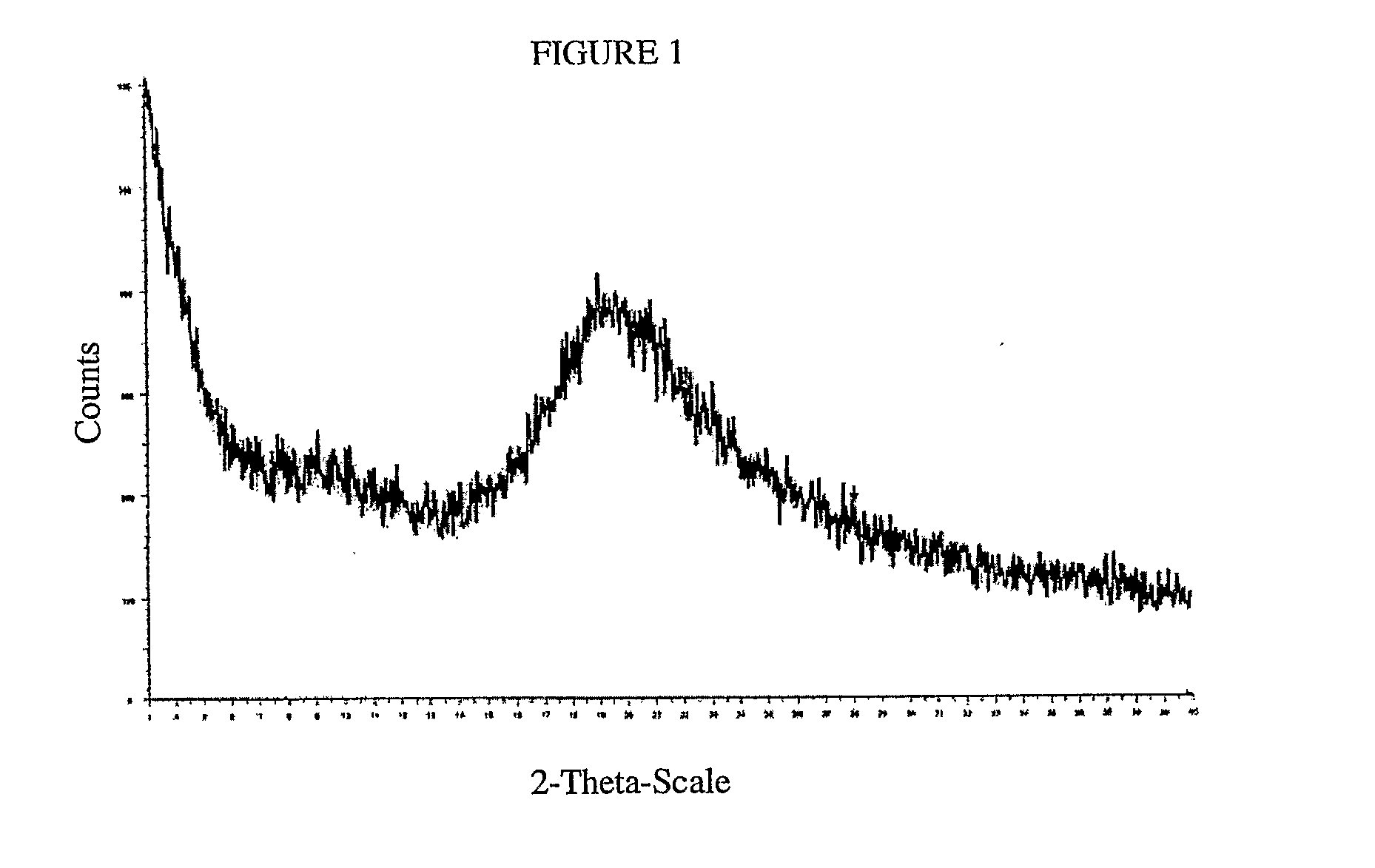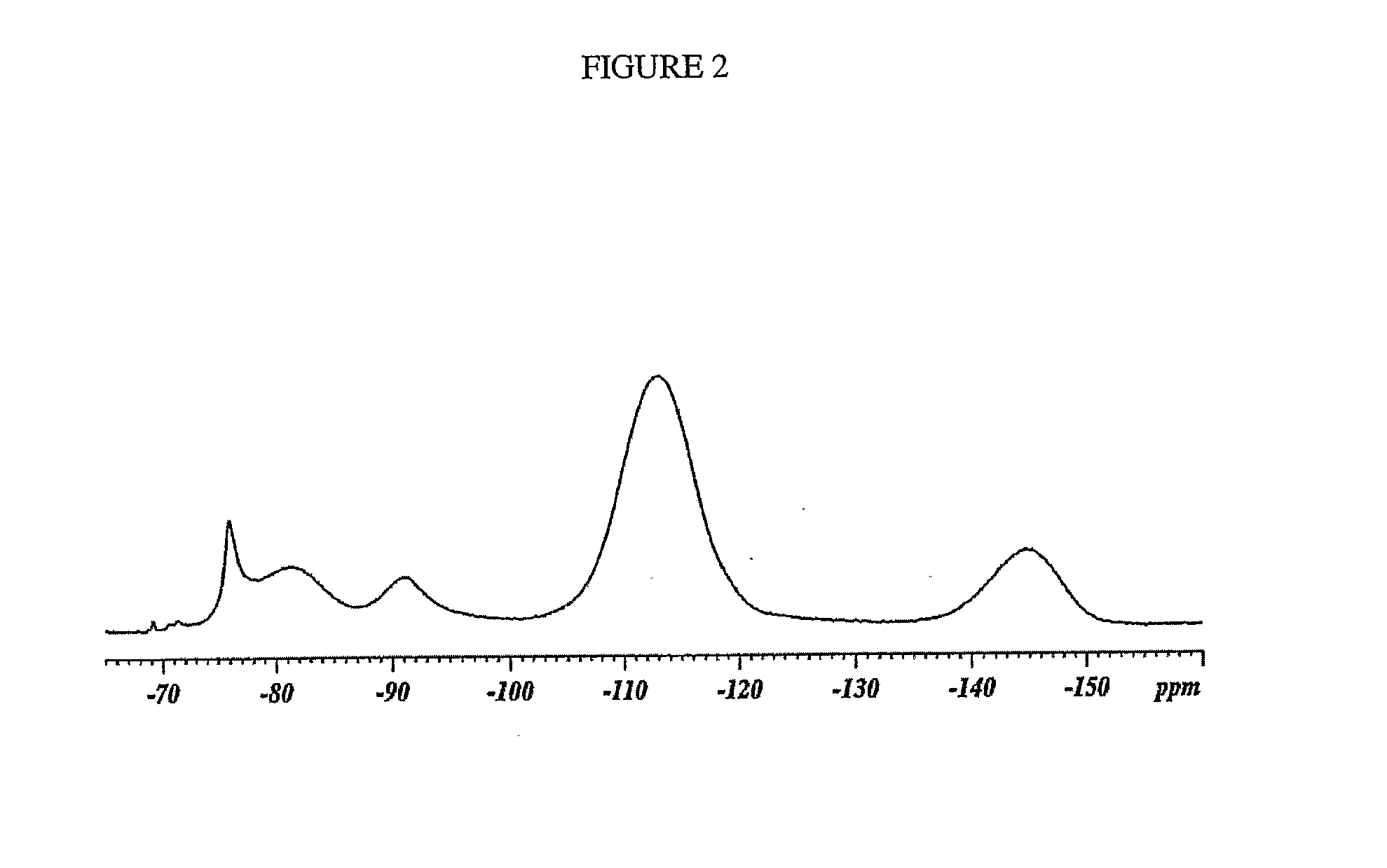Process for Forming Amorphous Atorvastatin
- Summary
- Abstract
- Description
- Claims
- Application Information
AI Technical Summary
Benefits of technology
Problems solved by technology
Method used
Image
Examples
example 1
Preparation of Amorphous Atorvastatin Calcium by Freeze-Drying from a Solution of Dimethyl Sulfoxide
Method A
[0082]Crystalline atorvastatin calcium (U.S. Pat. No. 5,969,156), 101.2 mg, was dissolved by shaking in 3 ml of dimethylsulfoxide (DMSO). The solution was diluted to 5 ml by the addition of DMSO and filtered through a 25 mm 0.22 μm syringe tip filter into a 5 ml Flint type I tubular glass vial. The unstoppered vial was loaded into a freeze-dryer (Virtis Advantage EL, Gardiner, N.Y.) and the solution was frozen at a shelf temperature of −40° C. Lyophilization was started at a shelf temperature of −24° C. followed by drying at a shelf temperature of 0° C. and then 5° C. Pressure was below 50 m Torr during the drying cycle. Additionally, the atorvastatin calcium was dried at 40° C. for 6 hours under vacuum in a vacuum oven.
[0083]The lyophilized sample was analyzed by XRD and 19F SS NMR. The powder XRD diffraction pattern showed a very broad peak from approximately 15-30 2θ that i...
example 2
Preparation of Amorphous Atorvastatin Calcium by Freeze-Drying from an Aqueous Solution Containing a Solubilizing Agent
Method A
[0088]Crystalline atorvastatin calcium (U.S. Pat. No. 5,969,156), 200.1 mg, was dissolved in approximately 70 ml of Dulbecco's phosphate buffered saline solution (PBS) containing 5.03 g of Tween 80. The solution was diluted to 100 ml with PBS and the final concentration of the solution contained 2 mg / ml of atorvastatin calcium. Two ml of solution was volumetrically filled into 20 ml Flint Type I tubular glass vials in a laminar flow hood. Stoppers (20 mm Lyophile D777-1, B2TR Fluoro Single Vent) were partially inserted into the vials. The vials were lyophilized using a Virtis Genesis 25 EL freeze-dryer (Gardiner, N.Y.) using the following cycle: samples were frozen at −40° C. followed by vacuum drying at a shelf temperature of −15° C. for approximately 22 hours under vacuum of 150 m Torr followed by drying at 40° C. for approximately 12 hours. The lyophilize...
example 3
Preparation of Amorphous Atorvastatin Calcium by Freeze-Drying from a Solution Containing a Pharmaceutically Acceptable Alkalizing Agent or a Buffer
Method A
[0090]Crystalline atorvastatin calcium (U.S. Pat. No. 5,969,156), 100.5 mg, was dissolved in approximately 700 ml of deionized water and the pH adjusted to 8.53 by the addition of solutions of NaOH and HCl. The solution was diluted to 1000 ml with deionized water. The solution was filtered through a 0.22 μm GV Durapore Stericup and filled at approximately 333 ml into 3 large flat bottom glass dishes. The dishes were loaded into a freeze dryer (Virtis Genesis 25 EL, Gardiner, N.Y.) and lyophilized according to the following cycle: samples were frozen at −40° C. followed by vacuum drying at a shelf temperature of −15° C. for approximately 93 hours, under vacuum at 150 m Torr, followed by drying at 40° C. for approximately 12 hours.
[0091]The resulting dried product was collected and analyzed by 19F solid state NMR.
[0092]The solid st...
PUM
| Property | Measurement | Unit |
|---|---|---|
| Volatility | aaaaa | aaaaa |
| Solubilizing | aaaaa | aaaaa |
Abstract
Description
Claims
Application Information
 Login to View More
Login to View More - R&D
- Intellectual Property
- Life Sciences
- Materials
- Tech Scout
- Unparalleled Data Quality
- Higher Quality Content
- 60% Fewer Hallucinations
Browse by: Latest US Patents, China's latest patents, Technical Efficacy Thesaurus, Application Domain, Technology Topic, Popular Technical Reports.
© 2025 PatSnap. All rights reserved.Legal|Privacy policy|Modern Slavery Act Transparency Statement|Sitemap|About US| Contact US: help@patsnap.com



